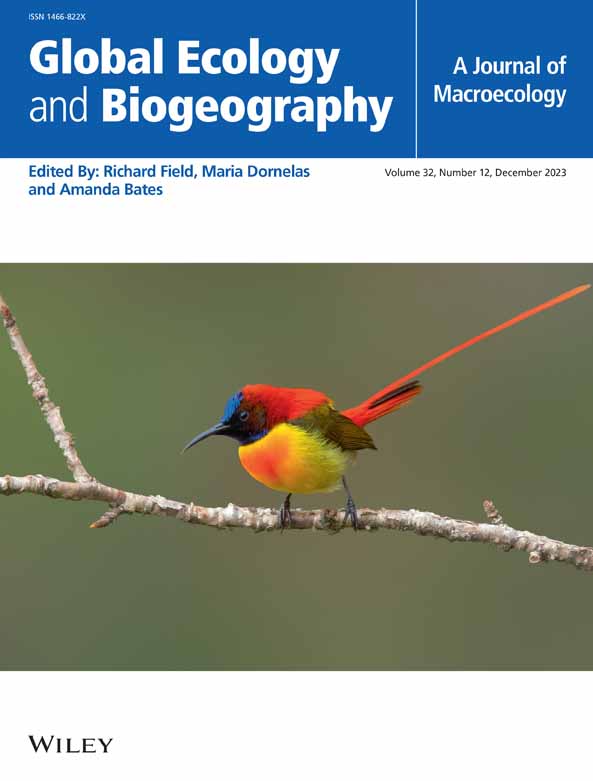Global Patterns of Climatic Niche Evolution in Angiosperms
Abstract
Aim
A species' rate of climatic niche evolution may reflect its ability to survive changing climates. Yet large-scale studies of these rates remain limited. Here, we assessed global patterns in climatic niche rates among angiosperms and explored the potential drivers shaping these patterns.
Location
Global.
Time Period
Current.
Major Taxa Studied
Angiosperms.
Methods
We estimated broad-scale climatic niches for 231,567 angiosperm species based on distributional data from over 1100 sources. By integrating a published phylogeny of angiosperms, we estimated rates of climatic niche change for each extant species as the difference between its current and ancestral niche divided by the species' age. Global patterns were analysed by averaging rates for all the species found in each geographic unit. We used multiple statistical models to explore the relative contributions of niche width and climatic seasonality to shaping these geographic patterns of niche evolution. We analysed patterns of niche evolution and their underlying drivers separately for temperature-related and precipitation-related niches and for different directions of niche evolution (i.e., increases and decreases in species' temperature and precipitation niche values when compared to their most recent ancestors).
Results
Rates for temperature variables increased with latitude, whereas rates for precipitation variables decreased with latitude. These opposing patterns in temperature and precipitation rates were related to opposing latitudinal patterns in climatic seasonality and species' niche widths for temperature and precipitation. Rates also differed for different directions of niche evolution, with different patterns associated with changes to warmer vs. cooler climates and wetter vs. drier climates.
Main Conclusions
Our results revealed large-scale geographic patterns in rates of climatic niche change for temperature and precipitation for the largest clade of angiosperms and their underlying drivers. These findings may have important implications for species' abilities to respond to recent climate change.

 求助内容:
求助内容: 应助结果提醒方式:
应助结果提醒方式:


